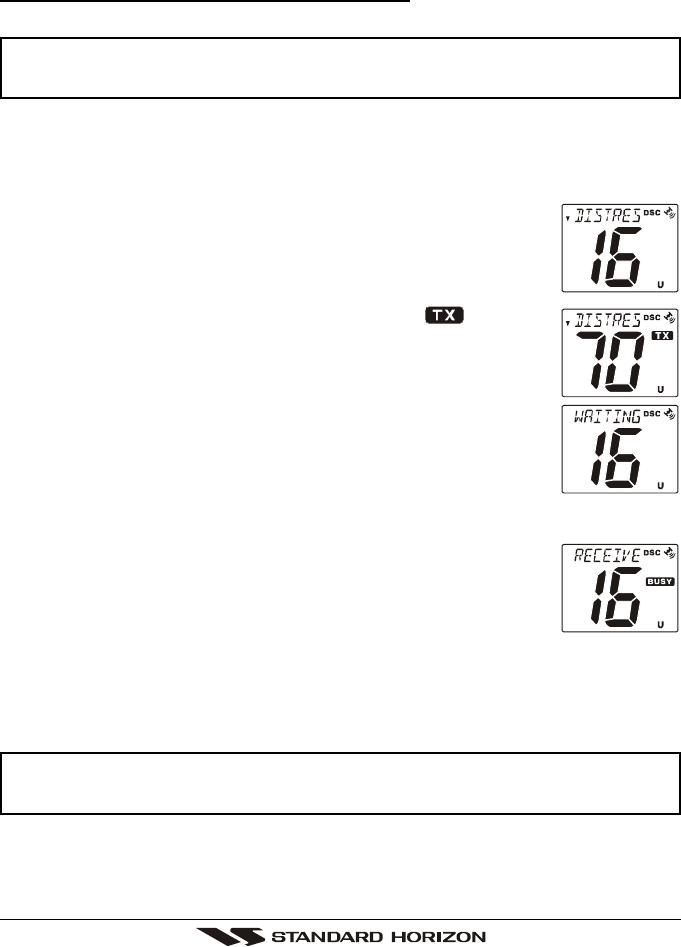
Page 33Phantom PS1000
11.4 DSC DISTRESS CALL
The Phantom PS1000 is capable of transmitting and receiving DSC Distress
messages to all DSC radios. The Phantom PS1000 may be connected to a
GPS to also transmit the Latitude, Longitude of the vessel in a distress.
11.4.1 Transmitting a DSC Distress Call
NOTE
To be able to transmit a DSC distress call an MMSI number must be
programmed, refer to section “11.2.2 Programming the MMSI.”
In order for your ships location to be transmitted a GPS must be connected to
thePhantom PS1000, refer to section “8.4 CONNECTION OF GPS WITH NMEA
OUTPUT.”
1. Lift the red rubber cover, then press the
[
DISTRESS
]
key.
The “DISTRESS” notation will appear on the LCD.
2. Press and hold the
[
DISTRESS
]
key. The radios display will
count down (3-2-1) and then transmit the Distress call.
3. When the distress signal is sent, CH70 and “ ” icon will
appear on the LCD. After the message has been sent, the
radio will sound a Distress Alarm.
4. The transceiver will watch for a DSC acknowledgment trans-
mission on CH70 and also receive calls on CH16.
5. If an acknowledgement is received, select channel 16 and
advise your distress situation.
6. If no acknowledgment is received, the distress call is re-
peated in 4 minute intervals until a DSC acknowledgment is received.
7. When a DSC Distress acknowledgment is received, a dis-
tress alarm sounds and channel 16 is automatically selected.
The LCD shows the MMSI of the ship responding to your
distress.
RECEIVED ACK: acknowledgment signal is received.
RECEIVED RLY: relay signal is received from another vessel or coast station.
8. To cancel the DSC distress alarm signal from the speaker, press any key.
NOTE
If the radio is receiving on a working channel or transmitting on a working
channel, DSC calls will not be received.


















